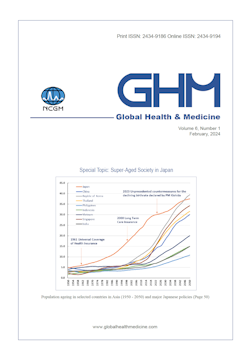Global Health & Medicine 2022;4(6):341-346.
Challenges and the potential of promoting remote medical interpreting during COVID-19
Saeki S, Iwata M, Tomizawa R, Minamitani K
Language barriers negatively affect patient outcomes, and linguistic assistance is essential for adequate healthcare. The adoption of face-to-face medical interpretating is believed to have been rendered more challenging by the implementation of hospital admission restrictions following the outbreak of novel coronavirus disease (COVID-19). On the other hand, remote interpretating can be implemented using merely equipment, enabling it to be introduced without being impacted by the transmission of illness, and its use may have spread globally. To comprehend how COVID-19 has impacted remote interpreting utilization and what issues have arisen, we conducted a systematic review of two databases, PubMed and Ichushi-web (Japanese medical literature) with "remote interpreting" and "COVID-19" as keywords in June, 2022. Five references were included in the review. The research supported an increase in remote interpreting during COVID-19 to limit the risk of infection. This change in the trend of medical interpreting has the potential of promoting remote medical interpreting for places lacking sufficient linguistically skilled human resources, regardless of the pandemic status. There have also been accounts of novel methods of remote medical interpretation in which neither the healthcare professional nor the interpreter was face-to-face with the patient, and difficulty was acknowledged by both the healthcare professional and the patient with remote interpreting. To fully take advantage of the possibilities of remote interpreting, additional training and support would be required. Further studies are also required to determine the best way to employ this technology.
DOI: 10.35772/ghm.2022.01056







